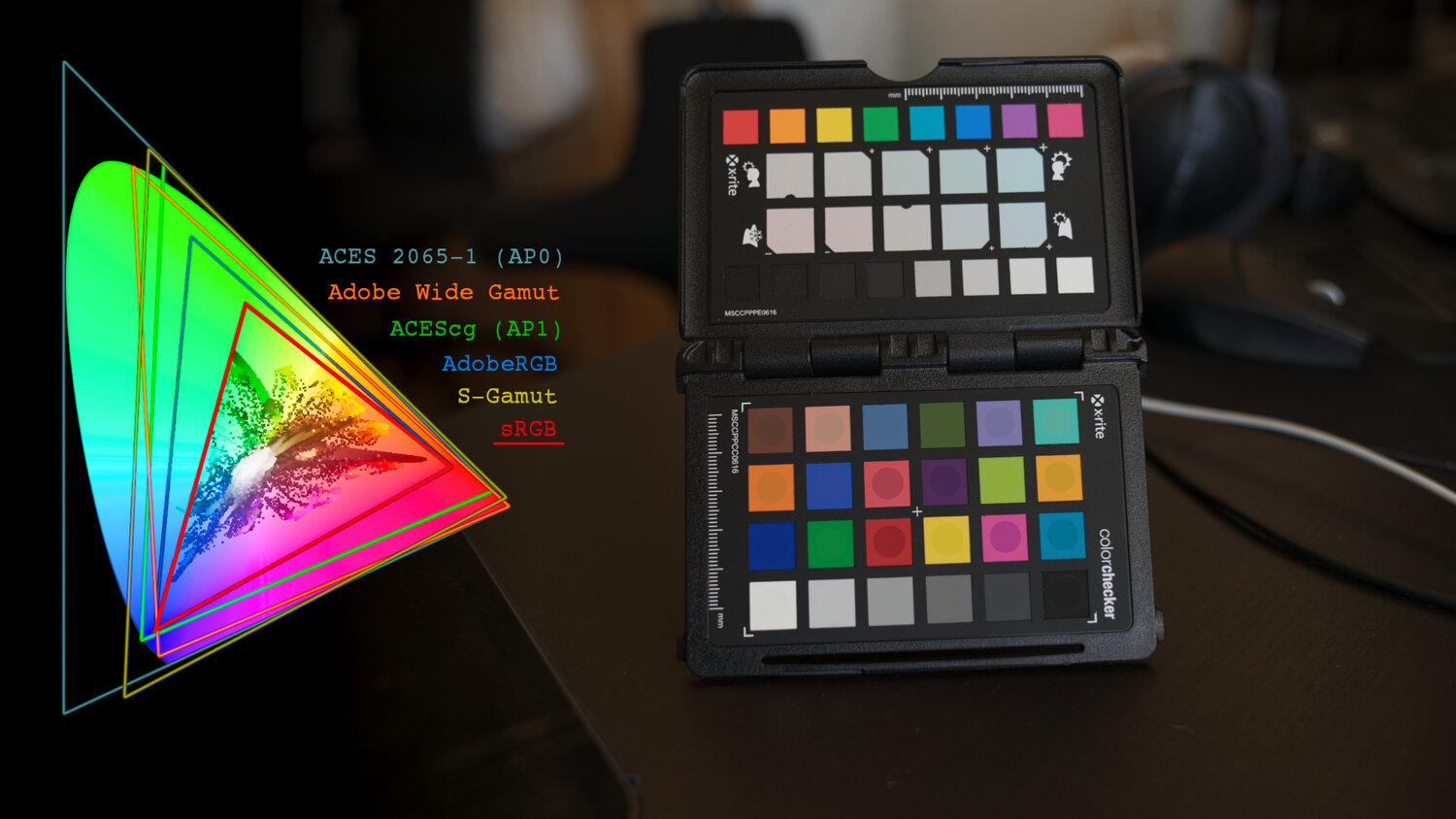beforesandafters.com/2021/08/16/das-element-new-asset-library-software-for-visual-effects/





3Dprinting (176) A.I. (761) animation (340) blender (197) colour (229) commercials (49) composition (152) cool (360) design (636) Featured (69) hardware (308) IOS (109) jokes (134) lighting (282) modeling (131) music (186) photogrammetry (178) photography (751) production (1254) python (87) quotes (491) reference (310) software (1336) trailers (297) ves (538) VR (219)
Category: production
-
Advanced Computer Vision with Python OpenCV and Mediapipe
https://www.freecodecamp.org/news/advanced-computer-vision-with-python
https://www.freecodecamp.org/news/how-to-use-opencv-and-python-for-computer-vision-and-ai
Working for a VFX (Visual Effects) studio provides numerous opportunities to leverage the power of Python and OpenCV for various tasks. OpenCV is a versatile computer vision library that can be applied to many aspects of the VFX pipeline. Here’s a detailed list of opportunities to take advantage of Python and OpenCV in a VFX studio:
- Image and Video Processing:
- Preprocessing: Python and OpenCV can be used for tasks like resizing, color correction, noise reduction, and frame interpolation to prepare images and videos for further processing.
- Format Conversion: Convert between different image and video formats using OpenCV’s capabilities.
- Tracking and Matchmoving:
- Feature Detection and Tracking: Utilize OpenCV to detect and track features in image sequences, which is essential for matchmoving tasks to integrate computer-generated elements into live-action footage.
- Rotoscoping and Masking:
- Segmentation and Masking: Use OpenCV for creating and manipulating masks and alpha channels for various VFX tasks, like isolating objects or characters from their backgrounds.
- Camera Calibration:
- Intrinsic and Extrinsic Calibration: Python and OpenCV can help calibrate cameras for accurate 3D scene reconstruction and camera tracking.
- 3D Scene Reconstruction:
- Stereoscopy: Use OpenCV to process stereoscopic image pairs for creating 3D depth maps and generating realistic 3D scenes.
- Structure from Motion (SfM): Implement SfM techniques to create 3D models from 2D image sequences.
- Green Screen and Blue Screen Keying:
- Chroma Keying: Implement advanced keying algorithms using OpenCV to seamlessly integrate actors and objects into virtual environments.
- Particle and Fluid Simulations:
- Particle Tracking: Utilize OpenCV to track and manipulate particles in fluid simulations for more realistic visual effects.
- Motion Analysis:
- Optical Flow: Implement optical flow algorithms to analyze motion patterns in footage, useful for creating dynamic VFX elements that follow the motion of objects.
- Virtual Set Extension:
- Camera Projection: Use camera calibration techniques to project virtual environments onto physical sets, extending the visual scope of a scene.
- Color Grading:
- Color Correction: Implement custom color grading algorithms to match the color tones and moods of different shots.
- Automated QC (Quality Control):
- Artifact Detection: Develop Python scripts to automatically detect and flag visual artifacts like noise, flicker, or compression artifacts in rendered frames.
- Data Analysis and Visualization:
- Performance Metrics: Use Python to analyze rendering times and optimize the rendering process.
- Data Visualization: Generate graphs and charts to visualize render farm usage, project progress, and resource allocation.
- Automating Repetitive Tasks:
- Batch Processing: Automate repetitive tasks like resizing images, applying filters, or converting file formats across multiple shots.
- Machine Learning Integration:
- Object Detection: Integrate machine learning models (using frameworks like TensorFlow or PyTorch) to detect and track specific objects or elements within scenes.
- Pipeline Integration:
- Custom Tools: Develop Python scripts and tools to integrate OpenCV-based processes seamlessly into the studio’s pipeline.
- Real-time Visualization:
- Live Previsualization: Implement real-time OpenCV-based visualizations to aid decision-making during the preproduction stage.
- VR and AR Integration:
- Augmented Reality: Use Python and OpenCV to integrate virtual elements into real-world footage, creating compelling AR experiences.
- Camera Effects:
- Lens Distortion: Correct lens distortions and apply various camera effects using OpenCV, contributing to the desired visual style.
Interpolating frames from an EXR sequence using OpenCV can be useful when you have only every second frame of a final render and you want to create smoother motion by generating intermediate frames. However, keep in mind that interpolating frames might not always yield perfect results, especially if there are complex changes between frames. Here’s a basic example of how you might use OpenCV to achieve this:
import cv2 import numpy as np import os # Replace with the path to your EXR frames exr_folder = "path_to_exr_frames" # Replace with the appropriate frame extension and naming convention frame_template = "frame_{:04d}.exr" # Define the range of frame numbers you have start_frame = 1 end_frame = 100 step = 2 # Define the output folder for interpolated frames output_folder = "output_interpolated_frames" os.makedirs(output_folder, exist_ok=True) # Loop through the frame range and interpolate for frame_num in range(start_frame, end_frame + 1, step): frame_path = os.path.join(exr_folder, frame_template.format(frame_num)) next_frame_path = os.path.join(exr_folder, frame_template.format(frame_num + step)) if os.path.exists(frame_path) and os.path.exists(next_frame_path): frame = cv2.imread(frame_path, cv2.IMREAD_ANYDEPTH | cv2.IMREAD_COLOR) next_frame = cv2.imread(next_frame_path, cv2.IMREAD_ANYDEPTH | cv2.IMREAD_COLOR) # Interpolate frames using simple averaging interpolated_frame = (frame + next_frame) / 2 # Save interpolated frame output_path = os.path.join(output_folder, frame_template.format(frame_num)) cv2.imwrite(output_path, interpolated_frame) print(f"Interpolated frame {frame_num}") # alternatively: print("Interpolated frame {}".format(frame_num))Please note the following points:
- The above example uses simple averaging to interpolate frames. More advanced interpolation methods might provide better results, such as motion-based algorithms like optical flow-based interpolation.
- EXR files can store high dynamic range (HDR) data, so make sure to use cv2.IMREAD_ANYDEPTH flag when reading these files.
- OpenCV might not support EXR format directly. You might need to use a library like exr to read and manipulate EXR files, and then convert them to OpenCV-compatible formats.
- Consider the characteristics of your specific render when using interpolation. If there are large changes between frames, the interpolation might lead to artifacts.
- Experiment with different interpolation methods and parameters to achieve the desired result.
- For a more advanced and accurate interpolation, you might need to implement or use existing algorithms that take into account motion estimation and compensation.
- Image and Video Processing:
-
How to Build a Hackintosh
https://www.freecodecamp.org/news/build-a-hackintosh/
A Hackintosh is a non-Mac computer system, made with PC parts, that runs the macOS operating system.
-
LuxCore – Open Source, Physically Based Renderer for Blender
Note: Although the original LuxRender is a full spectral renderer, the new LuxCoreRender drops full spectral rendering in favor of simulating spectral dispersion when required.[14][15] However, this leads to some inaccuracies when rendering caustics in some circumstances.[16]
-
Introduction to Deep Compositing in Foundry Nuke as seen at Weta
The full story
https://www.fxguide.com/fxfeatured/the-art-of-deep-compositing/Deep Compositing in VFX
https://www.diva-portal.org/smash/get/diva2:1325032/FULLTEXT01.pdfWeta
https://www.wetafx.co.nz/research-and-tech/technology/deep-compositing/Camera Space Deep Volumetric Shadows at Weta
https://jo.dreggn.org/home/2012_camera_space.pdfDeep Volumes on Blade Runner 2049
https://www.foundry.com/insights/film-tv/blade-runner-2049-compositingIntro to Deep Compositing
Deep Compositing Webinar
-
Volume 2 of The Epic Virtual Production Field Guide now available
https://www.unrealengine.com/en-US/blog/volume-2-of-the-virtual-production-field-guide-now-available
https://cdn2.unrealengine.com/Virtual+Production+Field+Guide+Volume+2+v1.0-5b06b62cbc5f.pdf
https://www.vesglobal.org/wp-content/uploads/2021/04/VirtualProductionFieldGuideVolume2New.pdf
v2.1.0 Local copy:
-
-
Remote working pros and cons
www.leforttalentgroup.com/business-blog/is-the-genie-out-forever
Cons of remote working:
- 1-Prefer 2 distinct locations in life — 1 for work, 1 for everything else
- 2-Being able to manage the group of employees in one location is preferable — Meetings, training, management of teams and personalities has been easier.
- 3-Confidentiality and Security — depending on the nature of the business, being able to lessen liabilities by containing the work location
- 4-Social community — Many fully enjoy the traditional work community and build life long connections
- 5-Love — A quick Google search shows various sources that cite anywhere from 20-33 percent of people met their spouse through work. What will those stats look like in a year or two from now?
- 6-Road Warriors with great sound systems in their cars — Some enjoy the commute to unwind after work cranking tunes or catch up with friends and family waiting for the gridlock to ease. Others to continue working from the car.
Pros of remote working:
- 1-The overhead costs — Keeping large commercial real estate holdings and related maintenance costs
- 2-Killer commutes — 5-20 hours/week per employee in lost time now potentially used for other purposes
- 3-Daily Daycare Scramble — Racing to drop them off or pick them up each day
- 4-Environmentally, a lower carbon footprint — Less traffic, less pollution
- 5-Quality Family time — Many parents are spending more time with their growing children
Some useful tips about working online:
- Clarify and focus on priorities.
- Define and manage expectations more explicitly than normal (give context to everything)
- Log all your working hours.
- Learn about and respect people’s boundaries.
- Pay attention to people’s verbal and physical cues.
- Pay attention to both people’s emotional, hidden and factual cues.
- Be wary about anticipating, judging, rationalizing, competing, defending, rebutting…
-
Intel Open Source Image Denoise in Blender – High-Performance Denoising Library for Ray Tracing
https://www.openimagedenoise.org/
https://github.com/OpenImageDenoise/oidn/releases/tag/v1.3.0
COLLECTIONS
| Featured AI
| Design And Composition
| Explore posts
POPULAR SEARCHES
unreal | pipeline | virtual production | free | learn | photoshop | 360 | macro | google | nvidia | resolution | open source | hdri | real-time | photography basics | nuke
FEATURED POSTS
Social Links
DISCLAIMER – Links and images on this website may be protected by the respective owners’ copyright. All data submitted by users through this site shall be treated as freely available to share.

